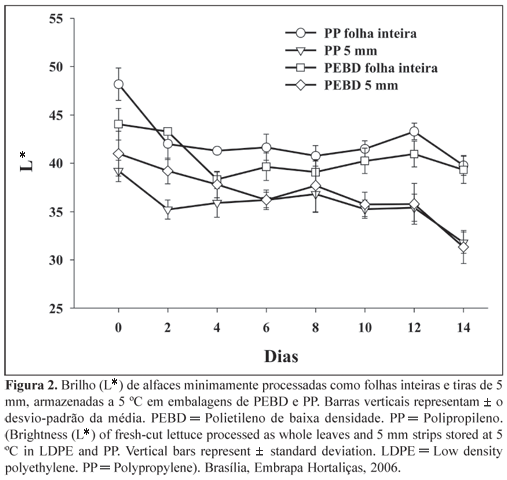Minimal processing usually causes quality loss, reduces shelf-life, and promotes sensory attributes alterations. The occurrence of browning in the midrib of fresh-cut lettuce is commonly observed and is associated with cell tissue disrupture, putting in contact enzymes and their respective substrates. Chemical, physical, and biochemical quality of fresh-cut crisphead lettuce stored under refrigeration and two different packaging systems were evaluated in the present work. Lettuce cv. Verônica was harvested in commercial fields in Brasilia, Brazil, and was minimally processed as whole leaves and 5 mm strips. Fresh-cut lettuce was then packed into polypropylene and low density polyethylene plastic films and was stored at 5ºC during 14 days. Every two days processed material was evaluated for titratable acidity, color (L*a*b*) and polyphenoloxidase and peroxidase enzymes activity. Lettuce processed as whole leaves showed higher brightness (L*) when compared to the material sliced at 5 mm, for both the packaging systems studied. Both polyphenoloxidase and peroxidase activities were higher for fresh-cut lettuce sliced at 5 mm when compared to whole leaves. Lettuce processed as 5 mm strips had the highest enzymatic browning, lowest brightness and organic acid content for both the packaging systems studied.
Lactuca sativa L.; polyphenoloxidase; peroxidase; fresh-cut; color; titratable acidity




